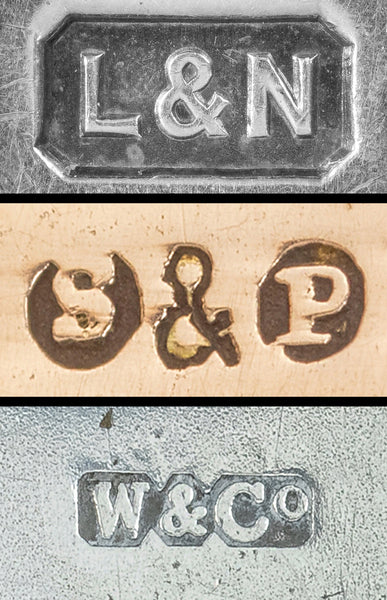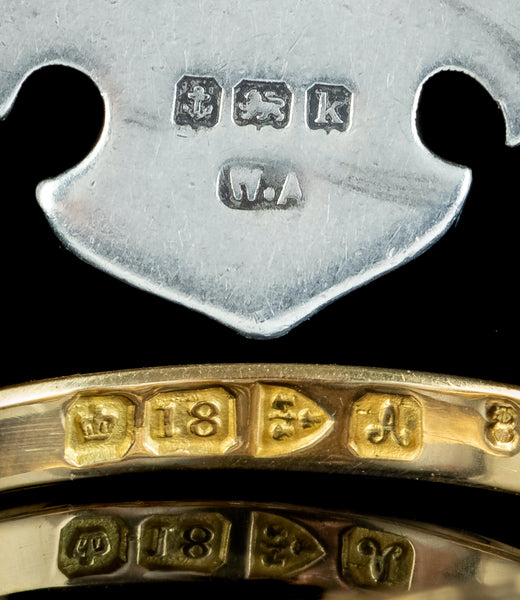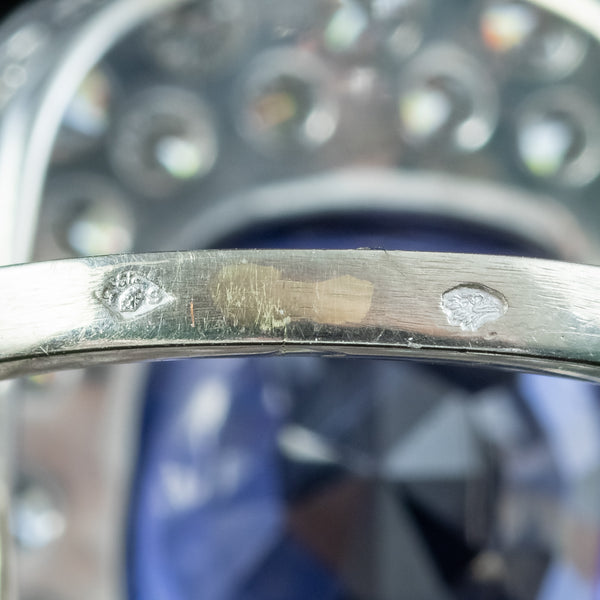Understanding Victorian Jewellery Makers Marks

While you might be familiar with hallmarks, the small stamped designs which define the purity of the metal used in a piece, but you may be a little less familiar with makers marks.
One of the first things that an experienced buyer or seller of antique jewellery will look for is who made it, and this can usually be worked out using the makers mark.
What is a makers mark?
Makers marks (also known as trademarks) are initials or marks stamped into gold, silver or platinum pieces which identify the manufacturing firm that produced the piece.
These makers marks are usually the only way that one can actually prove that a piece of jewellery has actually been manufactured by a certain maker, so they're incredibly useful to traders and collectors.
A makers mark is the signature of its maker or manufacturer. Traditionally they were used so that the craftsmen behind a particular piece could be identified.

Nowadays the purpose of a hallmark is more akin to a modern day trademark, and the presence of more notable markers marks will command much higher prices.
But much like hallmarks, makers marks are also useful in helping us date pieces of jewellery.
This is because over time, the makers mark may evolve, and those who know when certain marks were used can more easily pin down when a piece may have been made.
Hallmarks
It is very easy to get makers marks confused with hallmarks, but its important to know that they are two very different things.
Generally, a hallmark will reveal the purity of the metal used in the piece, as well as where it was assayed and possibly when it was produced.
On the other hand, a makers mark solely refers to which craftsman or company produced it.

Makers marks are very similar to hallmarks, and while they need to be registered at an assay office, as they are struck by the manufacturer themselves, they must be considered a separate entity.
History
Makers marks started to become common in the late middle ages, as several European countries made it compulsory for all gold and silver artefacts to bear an identifier as a step to protect consumers.
In countries where hallmarking was traditionally mandatory, all makers marks had to be unique and copies of them were held in the archives of the guilds. However, the fact that all countries have different rules means that they can vary quite a bit from one piece to another.
The marks usually carry the initials of the maker as well as a unique pictorial mark. These were sometimes regulated, for example in France, where all makers marks from 1797 must be in a diamond shape, whereas in the UK and its former colonies, most makers marks will contain ampersands.

In the USA, makers marks were only made mandatory in 1961, making these pieces much harder to identify.
Whilst not every piece of antique jewellery will bear markings when we are assessing the pieces that we discover we always take note of them and provide as much information as we can to help our customers understand a piece as much as they possibly can.
You can learn more about hallmarks with our handy guide here.
Our blog and advice centre contain many other helpful resources for antique jewellery enthusiasts.
You can view our full collection of vintage and antique jewellery here.



